China’s Ugliest Buildings: A Yearly Case of Architectural Catharsis
Qionglu Lei
At first glance, an online contest like Top 10 Ugliest Buildings in China might not seem very influential. Blatantly subjective and at times questionable in its selection process, it continues to attract both national and international attention for its role in allowing a public discourse on the aesthetic issues of Chinese contemporary architecture. The subtle influence of this contest on a communist country should not be overlooked. Judging “ugliness” is a rare opportunity to express distaste about the way Chinese cities are built and indicates a growing cultural sophistication and longing for a distinctively Chinese aesthetic as a counterpoint to homogenized global architecture seen through a Western lens. At the very least, Top 10 Ugliest Buildings in China gives way for a yearly retrospective on Chinese cultural identity.
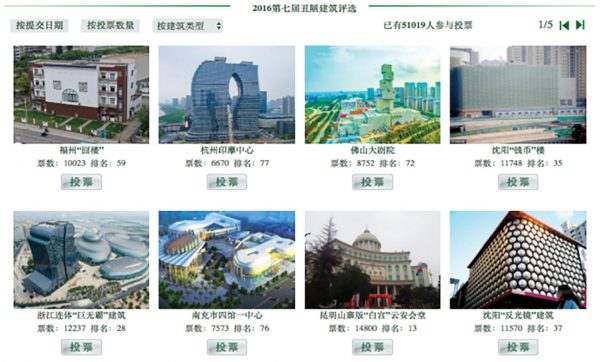
Figure 1. Screenshot of the types of images accepted in the initial submission and voting phases of China’s Top 10 Ugliest Buildings competition. 2016. Courtesy of Archcy.com.
Since its inception in 2010, the contest is hosted annually on Archcy.com (Architecture Chang-Yan, or “Free-Speech Architecture”), a website created by architectural consulting company RCC China. The rules are loose—both professional critics and the general public vote on what they deem to be the year’s ugliest buildings. The competition does not limit how many entries one makes nor does it require a verifiable record of legitimate registration.1 The visual standards of the contest are even looser—buildings are shown from both birds-eye and pedestrian views, and in some cases are left as 3D renderings. (Fig. 1) As much as a free-for-all as the contest presents itself to be, its presence serves an important role in merging the cultural and aesthetic opinions of the country’s intelligentsia and general public.
In order to come to a consensus of China’s top 10 ugliest buildings of the year, the contest is divided into three stages. In the first stage, anyone can nominate a building. Archcy.com has some criteria for voters to weigh claims of ugliness against. These suggestions, in so many words, indicate admonishment of oversimplified, literal forms. The critique on form stems from the tendency to use a building’s outward appearance to demonstrate China’s economic strength and political power under the globalizing circumstance. For example, the Chinese phenomenon known as shanzhai, defined as copying and plagiarism, is one of the criteria as well as “blind worship of an image from either the West or ancient China.”2 These are just some points of entry into a competition that critiques arbitrary imitations of existing iconic buildings that make no sense in a local Chinese context. Buildings criticized for their “symbolic and metaphoric façades that are detached from the building’s mission” are vilified because their resulting forms are more like statuary than successful attempts at establishing iconography, therefore bringing “weirdness” to cities.3 These qualifications are relatively explicit compared to others that do not give any explanation, but rather let voters interpret what classifies “strange and bad shape” or “inharmonious design.”4
In 2016, the submission process ran from February to June. Voting continued until November, where judges narrowed down the submissions to 50. In December, expert judges, including Chinese architects, critics, leaders of national art institutes, and scholars, made the final decision of the top 10 ugliest demonstrations of architecture in the country for that year.5 Up until 2012, there was an intermediary stage in which a panel of the website’s dedicated users would narrow down the 50 initial submissions into 20 before going off to the expert panel for final decisions, but this has since been removed.6
The design of the rules aims to take into consideration opinions from both authorities and everyday individuals who walk by so-called ugly architecture and interact with it on a regular basis. The contest requires users to fill out their names, but as most online submission forms, this is a formality and there is no requirement to correctly identify oneself. Once the initial 50 buildings are chosen, anonymous comments are allowed on the building’s profile page. It is in this space that many people have found a place to question and criticize state-controlled buildings, a luxury for a majority who feel largely ignored in regards to the urban planning and development of China. It gifts a certain degree of agency to people under a political system that restricts freedom of speech. On this website, one is free to question architectural projects in China completed by (mostly Western) international architects as well as by local ones.
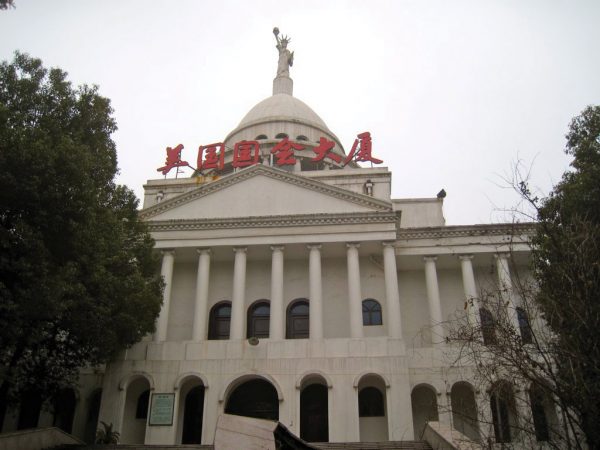
Figure 2. “Shanzhai” US Capitol in Huaxi Village. Photograph by Bert van Dijk. Huaxi Village, China, 2011. Courtesy of Flickr Creative Commons.
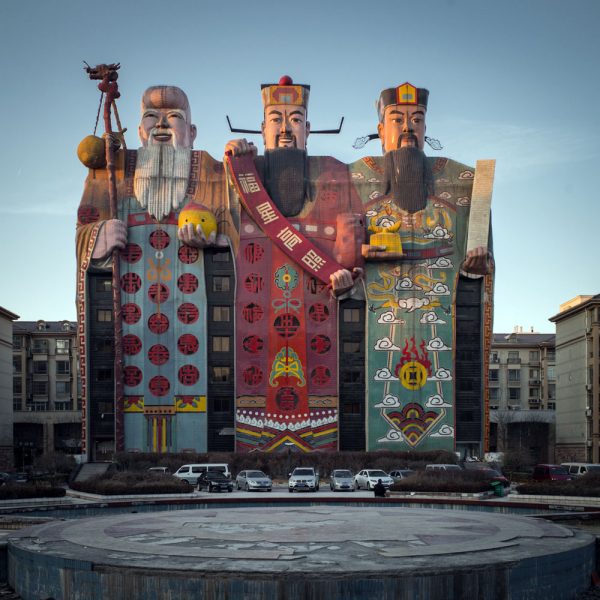
Figure 3. Tianzi Hotel. Photograph by Lei Han. Hebei, China, 2015. Courtesy of Flickr Creative Commons.
In the early years of the contest, the finalists usually shared some explicit characteristics which reflected Chinese attitudes at the time. Buildings that were considered ugly were criticized for their oversimplified symbols and dedicated regard to form over function. In 2011, shanzhai was a prominent theme with a copy of the United States Capitol Building in Huaxi Village making the final list.7 (Fig. 2) Roughly adopting the silhouette of United States Capitol, the White House, and the Statue of Liberty, the building is nothing more than a tool for propaganda and serves no purpose.
One of the ugliest buildings in 2010 was the Tianzi Hotel in Langfang, Hebei Province. According to commenters who visited the building at night, the 10-floor hotel, literally representing three Chinese gods, “horrified” people with its scale and “creepiness.”8 (Fig. 3) While some voters just see it as kitschy, for others the building brings up connotations of the Chinese tradition of burning paper toys to send as companions to families and friends who have passed away. Without a proper context in which sacred sculptures are empowered by rituals and temples, the human-figured façade of the hotel brings up the fear of death. The unsettling feeling that the building elicits comes from a lack of self-awareness of the culture and traditions of the place. Therefore, the building becomes offensive.
Judging by factors of “creepiness” and ominous or offensive first impressions, one can see how the loose design of the competition allows voters to stray away from Archcy.com’s guidelines. For one, the statement of criteria is neither educational nor explanatory. The title of the competition hints at the other reason: On this platform, the public is free from restriction and encouraged to vote for the “ugly.” The articulation of “ugliness” is not required at the introductory stage, which allows for an influx of buildings submitted into consideration, not only because of their explicitly Western influences, but also based on impassioned responses to local governmental abuse of power through urban planning or simply due to finding a construction site a nuisance. Each vote at this stage is equally valid. It accepts buildings that represent voters’ confusion, suspicion, resentment, and shame which would only make sense when we take into consideration two ideas hovering over contemporary architecture in China. The first major idea to consider is the Chinese understanding of modernity, which ultimately seeps into architecture. The second phenomenon is a shift from a past that valued imitation to a present state of boldly denouncing shanzhai.
The Chinese interpretation of modernity has a different connotation than in the West where the term refers to either a certain style, period of time, or ideology emerging from a group of architects and critics. In the introduction to On the Edge: Ten Architects from China, Chinese architect and MIT professor Yung Ho Chang claimed, “architecture is modern in China.”9 The use of “modern,” widely adopted in Chinese politics and contemporary literature, as Chang points out, is an attitude of “opening-up” and absorbing mainly Western influences. This could be understood as an extension of the influences of the “reform and opening-up” policy in China since the 1970s.10 Coined by China’s previous leader Deng Xiaoping, the Chinese “opening-up” policy represents reforming and regaining economic strength in communist China. Since then, immersing oneself into the knowledge and experiences from the West has been the thematic melody.11 Architecture, in this sense, becomes a way of appropriating power, not simply imitating it.
In terms of the localization of knowledge, architecture is unlike many creative fields in China, Chang argues.12 For instance, the country’s leading figures in the visual, cinematic, and theatric arts are more likely to be locally educated whereas architecture is among the few disciplines where foreign architects play influential roles alongside local ones. “The notion of architecture as a body of knowledge as well as profession was also introduced from the West,” Chang states.13 This unfamiliarity results in a tendency of hiring Western architects as experts who are unlikely to interact with the building culturally on a daily basis.14
The marketing forces encouraged by this “opening-up” policy make Chinese architects who are less-valued than other creative professionals even more vulnerable. The historical values of China divide roles involved in an architectural project into planners/owners and carpenters. Chinese ancient architects were not seen as the creators of ideas, accounting for the practice of imitation or shanzhai. At best, architects were seen as master engineers executing ideas in a realistic way.15 Until recently, simulation was considered valuable in Chinese visual culture. For example, East Asian Art historian Wen Fong’s study of forgeries in Chinese painting demonstrate that there are different forms of forgeries: Tracing (mu) produces an exact replica of the original work whereas copying (lin) allows a bit of “wildness” while remaining almost the same. An imitation (fang) is close to an adaptation, whereas an “invention” (tsao) reminds viewers of the original work and at the same time raises up feelings of strangeness and contradiction.16 From tracing to inventing, the distance and differences between the original and the produced become further and further. In Original Copies: Architectural Mimicry in Contemporary China, Bianca Bosker argues that these forms consist of a spectrum, with each one “produced, received, and valued in its own way.”17 While the West is committed to the “culture of original,” according to Bosker, the Chinese regard a well-made copy as “a marker of technological and cultural superiority.”18 Thus, the copy secures itself without affecting the value and meanings that the original carries. The notion of differentiating the value of a copy from its source is applicable to architectural phenomena in both ancient China and contemporary society. Bosker gives examples such as the imperial gardens of the Song Dynasty and theme parks in contemporary China which show the tolerance—and in some cases, a welcome attitude—toward copies in Chinese culture.19
Through the progression of the Top 10 Ugliest Buildings in China over the years, one sees a cultural shift in tolerance of imitation from a selective preference to a hostile denial thereof. In light of such a shift, the postmodern theory of the simulacrum has impacted China, especially its intellectuals who follow French social theorist Jean Baudrillard and his ideas that “simulation threatens the difference between ‘true’ and ‘false,’ between ‘real’ and ‘imaginary.’”20
It is notable to mention that since its start, the contest, which has barely changed criteria, has arguably changed the typologies of ugliness. If looking at the results from 2016, flamboyant examples of shanzhai are not as common anymore. Instead, the ugliest buildings are now projects in which international architects failed to engage with the general public.
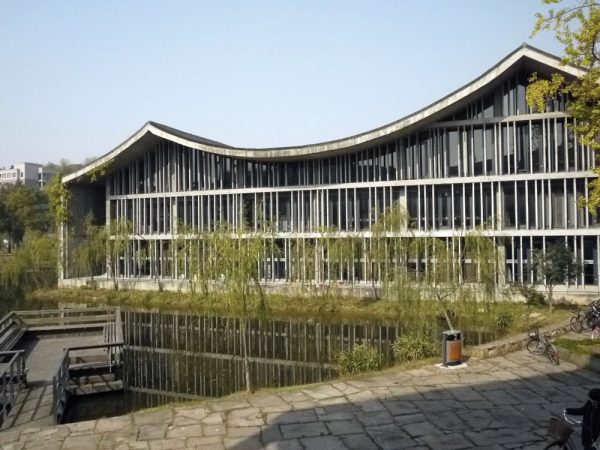
Figure 4. China Academy of Art, Xiangshan Campus by architect Wang Shu. Photograph by Flickr User TzuTzu. Hangzhou, China, 2012. Courtesy of Flickr Creative Commons.
Sunshine 100 Tian Yi Town, a massive residential district in Wuxi, China, was one of the 2016 contenders for ugliest buildings. Designed by Danish firm Schmidt Hammer Lassen Architects, the wavy façade of these buildings was an attempt to solve the problem of limited light reaching some tall residential buildings, yet the dense arrangement of the wave-shaped buildings created an aesthetic tension in the neighborhood.21
On one side, the developers and governments of Chinese cities are passionate about associating their projects with Western architecture firms so they may claim supposed landmarks to be combinations of Chinese aesthetics and Western architectural methodology. Here “Western” involvement is realized by a Western name on a multi-party contract. On the other side, architects and their firms who get commissions are cautious and selectively quiet about what they have done in China. Thanks to a linguistic barrier in the media, they seem to be trading a tacit approval of local interpretations of their works with the opportunities of experimenting with design in a land where budgets can skyrocket. One of the contest’s judges, Zheng Xiaogang, chief planner of nationally owned architecture and construction company CCI Engineering and Design Consultants Limited, complained in a post on Archcy.com that some government clients and developers have too much power, and the bureaus of urban planning cannot control them.22 The “ugliness” in the industry is not only an aesthetic one but also a financial and bureaucratic one.
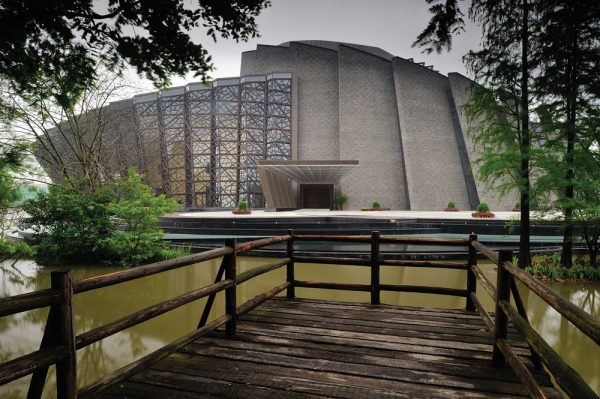
Figure 5. Wuzhen Theatre by architect Kris Yao. Photograph by David Chen. Zhejiang, China, 2013. Courtesy of Flickr Creative Commons.
After seeing so many strange buildings, one might ask a simple question: What is considered beautiful in China? Or rather, what can people live with? Considering the qualifications for “ugliness” advanced by this contest, Chinese aesthetic appreciation focuses on architecture that respects the environment rather than serving as a manifesto for artificiality. Its function also serves a social good. For instance, Pritzker Architecture Prize winner Wang Shu collected old bricks and incorporated the traditional art of Chinese gardens into his design of Xiangshan Campus for China Academy of Art in Hangzhou. (Fig. 4) Kris Yao, an architect from Taiwan, took inspiration from a lotus flower as an aesthetic and cultural symbol to design a structure based on the shape of the flower (rather than imitating it) for the Wuzhen Theatre. (Fig. 5) Cases like these two only count for a very small portion of the recently developed projects in China. Many still remain under the realm of kitsch or alien to the context. A contest like the Top 10 Ugliest Buildings in China emerged from a landscape of capital-driven and monumental imitational architecture—as a denouncement and warning of ugliness. To call it ugly is just the first step towards a distinctive Chinese aesthetic responsibility.
1 “About us (关于我们),” Archcy.com, http://www.archcy.com/about_us. [In Chinese]↵
2 “Top 10 Ugliest Buildings in China Selection Criteria (中国十大丑陋建筑’评选标准),” Archcy.com, Mar 04, 2013, http://www.archcy.com/activity/activity_online/ugly2013/8936a2609c1d8382. [In Chinese]↵
3 Ibid.↵
4 Ibid.↵
5 “Event Details (活动详情),” Archy.com, http://www.archcy.com/votes/2016. [In Chinese]↵
6 “Welcome to the Third China’s Top Ten Ugly Building Selection: Concerned about the Ugly
Building Selection, so the Industry Heard Your Voice (欢迎参与2012第三届中国十大丑陋建筑 评选——关注丑陋建筑评选,让行业听到你的声音),” Archcy.com, April 6, 2012, www.archcy.com/activity/activity_online/ugly2012/14a957ff2b39db3e. [In Chinese]↵
7 “Huaxi Village Shanzhai US Capitol Building (华西村山寨美国国会大厦),” Archcy.com, http://www.archcy.com/votes/2011/new/382. [In Chinese]↵
8 “Beijing Tianzi Hotel (北京天子酒店),” Archcy.com, www.archcy.com/votes/2010/new/32.[In Chinese]↵
9 Yung Ho Chang, “A Very Brief History of Modernity,” in On the Edge: Ten Architects from China, ed. Ian Luna and Thomas Tsang (New York: Rizzoli, 2007), 9-12.↵
10 Ibid.↵
11 Zhang Qin Nan, Chinese Ancient Architects (Beijing: Life SDX Joint Publishing, 2008).↵
12 Chang, “Brief History.”↵
13 Ibid.↵
14 Wang Ke, “The Contest of Ugly Buildings Is a New Start (丑陋建筑评选开创了先河),”
Archcy.com, June 20, 2011, http://www.archcy.com/activity/activity_online/ugly/9bb19623fc2a5f2c.
[In Chinese]↵
15 Qin Nan, Chinese Ancient Architects.↵
16 Wen Fong, “The Problem of Forgeries in Chinese Painting: Part One,” Artibus Asiae 25 no. 2/3 (1962): 95–140.↵
17 Bianca Bosker, Original Copies: Architectural Mimicry in Contemporary China (University of Hawai’i Press, 2015), 20-66.↵
18 Ibid.↵
19 Ibid.↵
20 Jean Baudrillard, Simulacra and Simulation (Ann Arbor: University of Michigan Press, 1994), 168.↵
21 “The Final List of 7th Top 10 The Ugliest Buildings in China (第七届建筑畅言网中国十大丑 陋建筑评选结果中榜揭晓),” Archcy.com, Dec 16, 2016, http://www.archcy.com/news/hotnews/c58a06a1c76b278e. [In Chinese]↵
22 Zeng Xiaogang, “Ugly Buildings are Built by the Less Culturally Educated (没文化的人才 做丑陋建筑),” Archcy.com, June 20, 2011, http://www.archcy.com/activity/activity_online/ugly/452d9d70f8019f5d. [In Chinese]↵
Author Affiliations
Qionglu Lei
MA student, Design Studies, Parsons School of Design

 DESIGN STUDIES BLOG
DESIGN STUDIES BLOG

